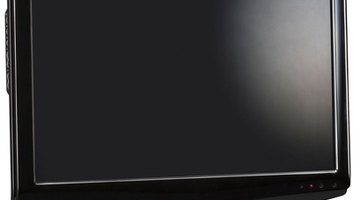The Effects of Overheating in a Samsung Plasma TV
Plasma televisions consist of thousands of tiny pixel cells that allow gases to be heated with electricity to produce light. This process produces a sharper picture on the screen than was possible before the technology's invention. The technology is not without its faults, however, and is prone to damages from overheating. Samsung plasma televisions are no exception to this rule and encounter many common over-heating problems.
Shortened TV Life

Consistent internal temperatures over 90 degrees Fahrenheit will shorten the life of your Samsung plasma television according to review and buying guide website, The Best Plasma TV. Plasma televisions generate a large amount of heat and allowing the unit to overheat will only put a greater strain on its internal components. You may notice your plasma screen television taking longer than usual to turn on or other symptoms such as spontaneous screen failure as a result of prolonged overheating.
Screen Burn-In
Overheating can weaken electronic components of plasma screen televisions. The Best Plasma TV says this can manifest in a condition known as screen burn-in. This is a permanent or temporary disfigurement of the plasma screen caused by aging of some of the pixels. Heat-damaged pixels produce less light than other normally functioning pixels. Owners will notice a shadow or haze on affected portions of the screen. The condition occurs when the screen is left on for an extended period which typically causes overheating.
Pronounced Design Flaws
Samsung plasma TVs that are overheated may begin to show design flaws much earlier than other televisions. These design flaws such as darkened areas of the screen are not caused by screen burn-in but by a faulty component known as the Light Tunnel. This component can grow prematurely weak when overheated. Samsung televisions have had so many problems with the Light Tunnel component that the company has been involved in several class-action lawsuits including one filed in 2010 at the U.S. District Court of New Jersey. The suit was filed on behalf of consumers unable to come to an agreement with Samsung to admit wrongdoing and replace the component.
References
Writer Bio
Jonathan Lister has been a writer and content marketer since 2003. His latest book publication, "Bullet, a Demos City Novel" is forthcoming from J Taylor Publishing in June 2014. He holds a Bachelor of Arts in English from Shippensburg University and a Master of Fine Arts in writing and poetics from Naropa University.
Photo Credits
- full hd lcd tv image by mattmatt73 from Fotolia.com
More Articles
- How to Clean the Air Intake Screen of an A.O. Smith ProMax Water Heater
- Troubleshooting Sanyo Air Conditioners
- GE Profile Harmony Touch Screen Problems
- How to Tell If an Old Painting Is Worth Anything
- How to Adjust the Time & Date on a Honeywell Thermostat
- What Are the Advantages and Disadvantages of an Intrusion Detection System?



